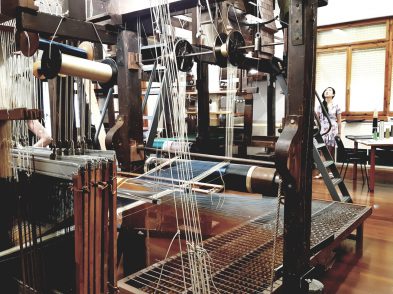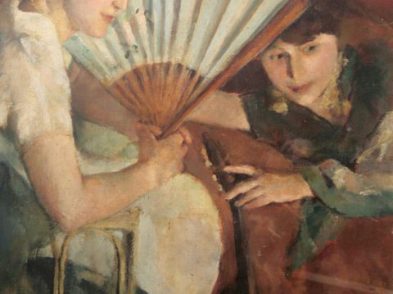Behind every great man is a great woman, the old adage says. Was the same true of Michelangelo? Perhaps not in the classic sense, but here are tales of three women—an artist, a poet and a patroness of the arts—who “crossed his path” and influenced his life and legacy. Or maybe that was the other way round.
Sofonisba Anguissola
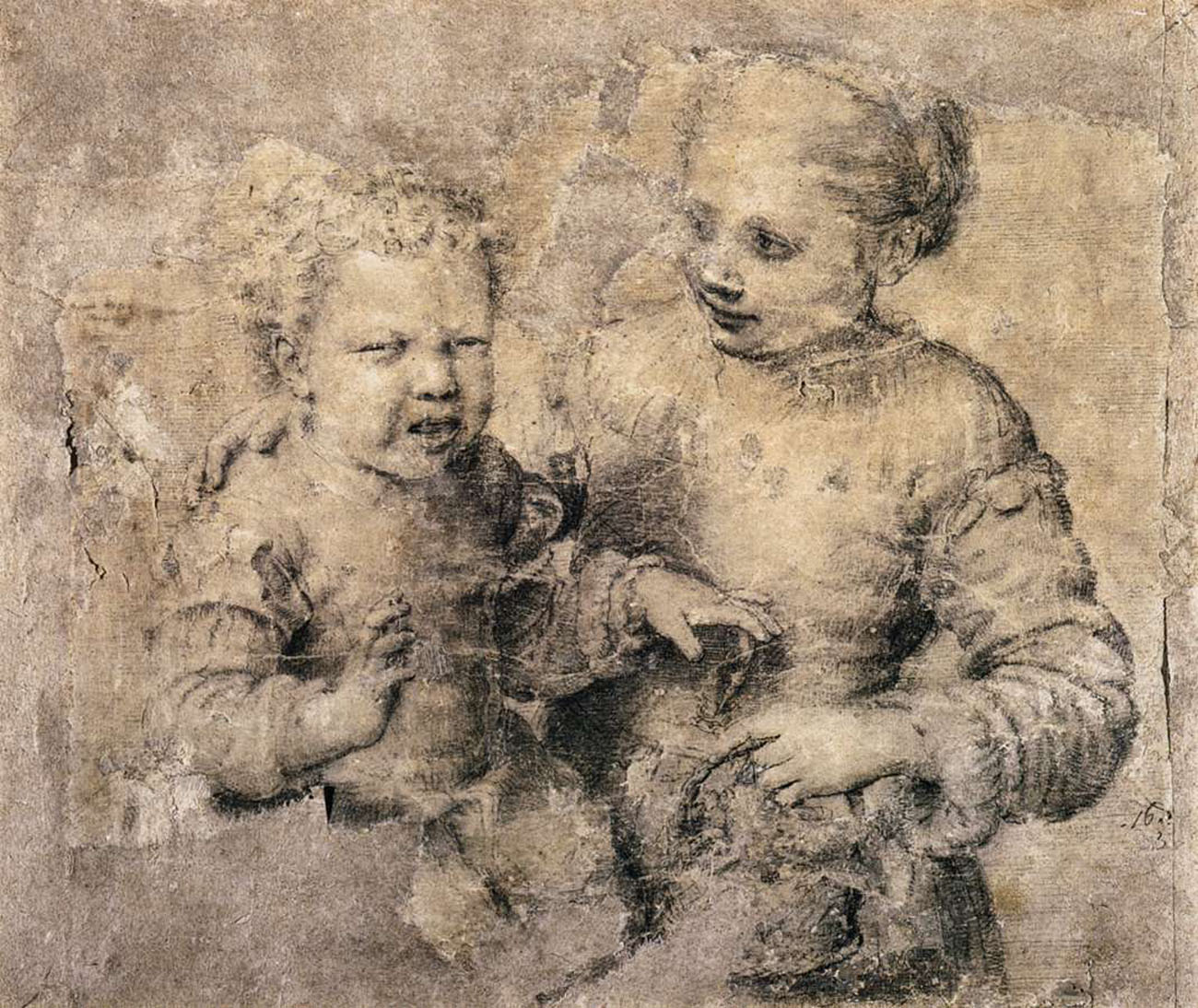
Sofonisba Anguissola (1532–1625) was the first woman to achieve international acclaim as a professional painter. She was the eldest daughter of an affluent nobleman from Genoa who arranged for the most famous artist of the era, Michelangelo, to be shown Sofonisba’s drawing of a Laughing Girl for a critique of her work. The Renaissance master admitted he admired her talent, but that the figure was neither pained nor angered, so he challenged her to draw a boy crying, which he felt would be more difficult to draw.
In response to this friendly challenge, Sofonisba showed both her craft and wit. She drew a teary-eyed boy whining over the finger he hurt while reaching into a bowl of crawfish, which was held by a smiling girl. The black chalk and charcoal on brown paper work is called Asdrubale Bitten by a Crawfish (1554)—it’s interesting to note that “Asdrubale” was the artist’s brother. The drawing so impressed an emissary of Michelangelo, Tommaso dei Cavalieri, that he sent it, along with Michelangelo’s illustration of Cleopatra, as a gift to Cosimo I de’ Medici, then Duke of Florence and a devoted patron of the arts. In his letter to the Duke, he wrote, “I’ve sent the drawing to you with this one of Michelangelo’s and I believe that it may stand comparison with many other drawings, for it is not simply beautiful, but also exhibits considerable invention.” Sofonisba’s work can be seen in Naples at the Museo Nazionale di Capodimonte.
It is thought her work inspired Caravaggio’s Boy Bitten by a Lizard, found in London’s National Gallery.
Vittoria Colonna
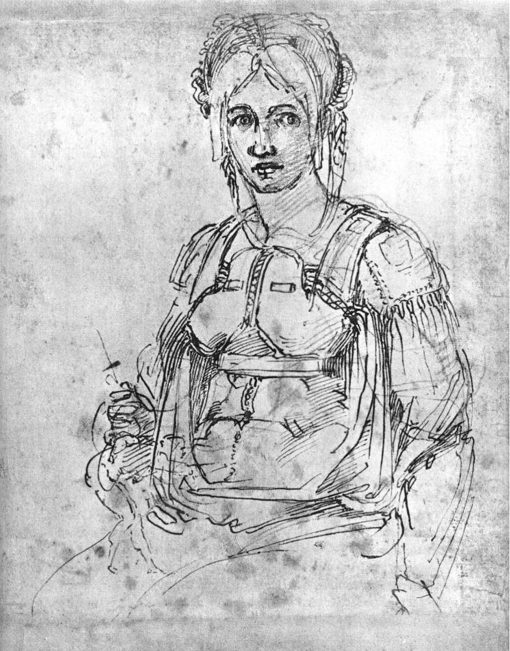
They met when Colonna was 46 and Michelangelo 61. There is very little documentation about the relationship between the artist and the renowned poetess, Marchesa of Pescara. Yet, their letters, poems and his drawings give us clues about the nature of their complex friendship. Was Colonna his muse, a platonic mistress or a passionate friend? Michelangelo wrote beautiful sonnets to Colonna and his six drawings of her portrayed the noblewoman’s liveliness and interest in spiritual themes. Portraying her distinguished features, the grand master never idealized her in his art. History remembers her as the woman Michelangelo loved. Indeed, she was one of the few women in his life. He wrote countless poems dedicated to her, but only one, written on the back of a letter, was addressed “Marchesa”. Michelangelo was always inventing ways to visit her in Viterbo, but she kept turning him away, which makes it confusing to understand why she would travel to Rome often to see her “singolarissimo amico”. Colonna was deeply devoted, and wrote him with much affection, even scribing a manuscript of spiritual poetry for him. Michelangelo, in turn, authored three drawings for Colonna: The Crucifixion (now lost), a Pietà in the Isabella Stewart Gardner Museum, Boston, and Christ and the Samaritan Woman.
Rosina Vendramin
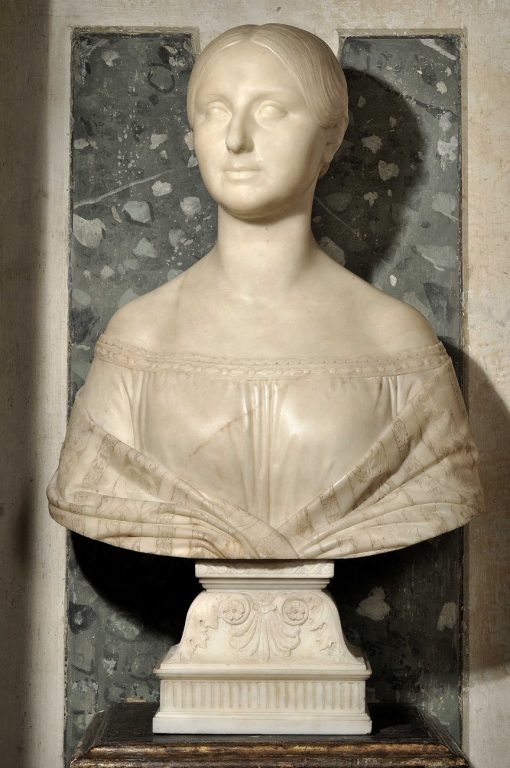
Rosina Vendramin (1814–56) married Cosimo Buonarroti in 1846. Cosimo, Michelangelo’s last descendant, inherited the Buonarroti house in 1814. At that time, it was in total disrepair, and it wasn’t until they married that the couple decided to renovate the palazzo, making it their home. During renovations, they were surprised to find several preparatory works by Michelangelo hidden inside a closet. After finding these works, the couple made it their mission to preserve Michelangelo’s memory and turn their house into a museum dedicated to him. In Cosimo’s will, he bequeathed their home and its art to Florence. Michelangelo never lived in their house, but, in 1612, the master’s grand-nephew, Michelangelo the Younger, expanded the original building according to Michelangelo’s designs. Rosina gathered documents, contracts, letters, poems and any written memorabilia by Michelangelo and his family into 169 volumes. She is credited for restoring, compiling, organizing and preserving these vast archives, which can be seen in part at Casa Buonarroti. Commemorative busts of Cosimo and Rosina can be found on the palace’s first floor. Rosina, who died in 1856 at age 42, is buried beside the remains of Michelangelo in the Buonarroti family tomb in Santa Croce. Two years later, her husband was buried beside her in the same sepulchre.



